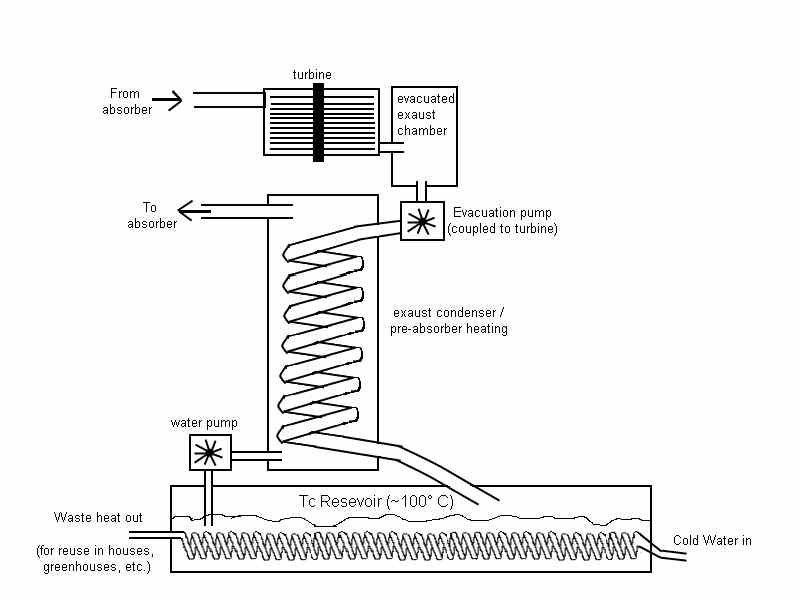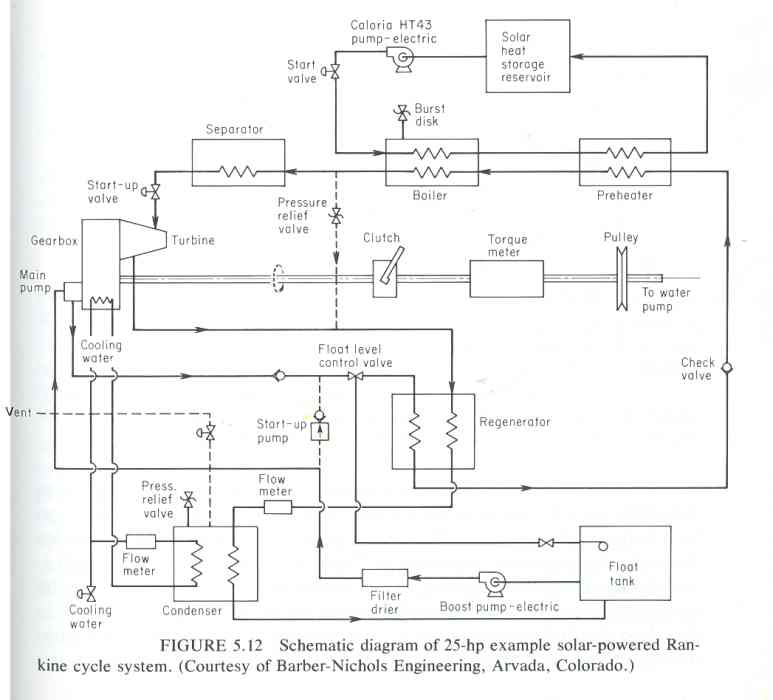Closed loop system for solar turbine
Main > Energy > Solar Power > Solar Turbine
A closed loop system is proposed for the working fluid of the Solar Turbine project.
An open loop system would just blow steam out into the atmosphere, which would be ideal for the performance of a heat engine (including a turbine). Better yet would be to exhaust into outer space, where steam exists at very low temperatures.
A closed loop offers the complication of a long convoluted condensing apparatus, which is responsible for reclaiming as much of the energy lost by the condensation of the steam as possible. Thus the design goals for a closed loop system are
- Minimal interference with ideal operation of the turbine.
- Maximal transfer of heat from exhaust to useful purposes.
Proposed system (open for peer review)
The system currently proposed by Elliot Hallmark uses an evacuation pump to imitate a boundless volume for the turbine to exhaust into, keeping the pressures there stable. Without it, the condensing coil would develop a pressure gradient along with the expected temperature gradient as large volumes of gas rush quickly through a winding, narrow coil. Thus the turbine is left to exhaust against higher than atmospheric pressure.
(Think about this: A turbine is designed to spin, and through that spinning develop torque. It is not an ideal design for blowing gas out its exhaust to overcome resistance. Thus, we extract the energy needed to overcome this resistance through the condenser from the steam where it is most effective, in turning the turbine, as opposed to exhaust, where the steam has less energy and does work less efficiently.)
This system uses the working fluid directly (what goes through the absorber tubes goes through the turbine). Alternative systems use heat exchangers to decouple the absorber chamber and regeneration/preheating from the turbine inlet and exhaust, respectively.
For example, I found this system design in a book:
Significant differences here are:
- The use of heat exchangers
- the addition of multiple safety release valves and filters.
- The seperation of the preheater/regeneration stages. (provides for more severe insulation for the higher temperature stages.)

